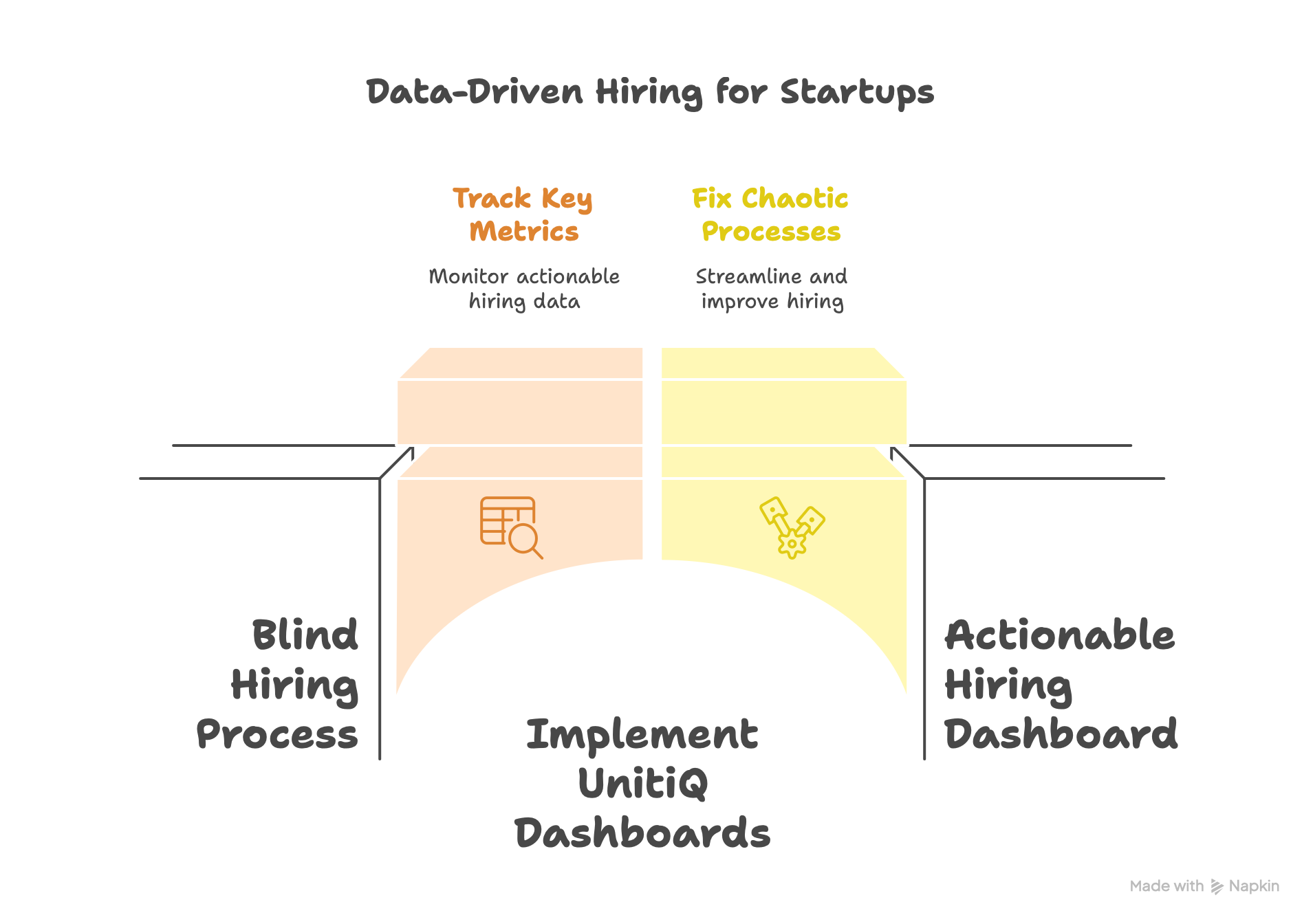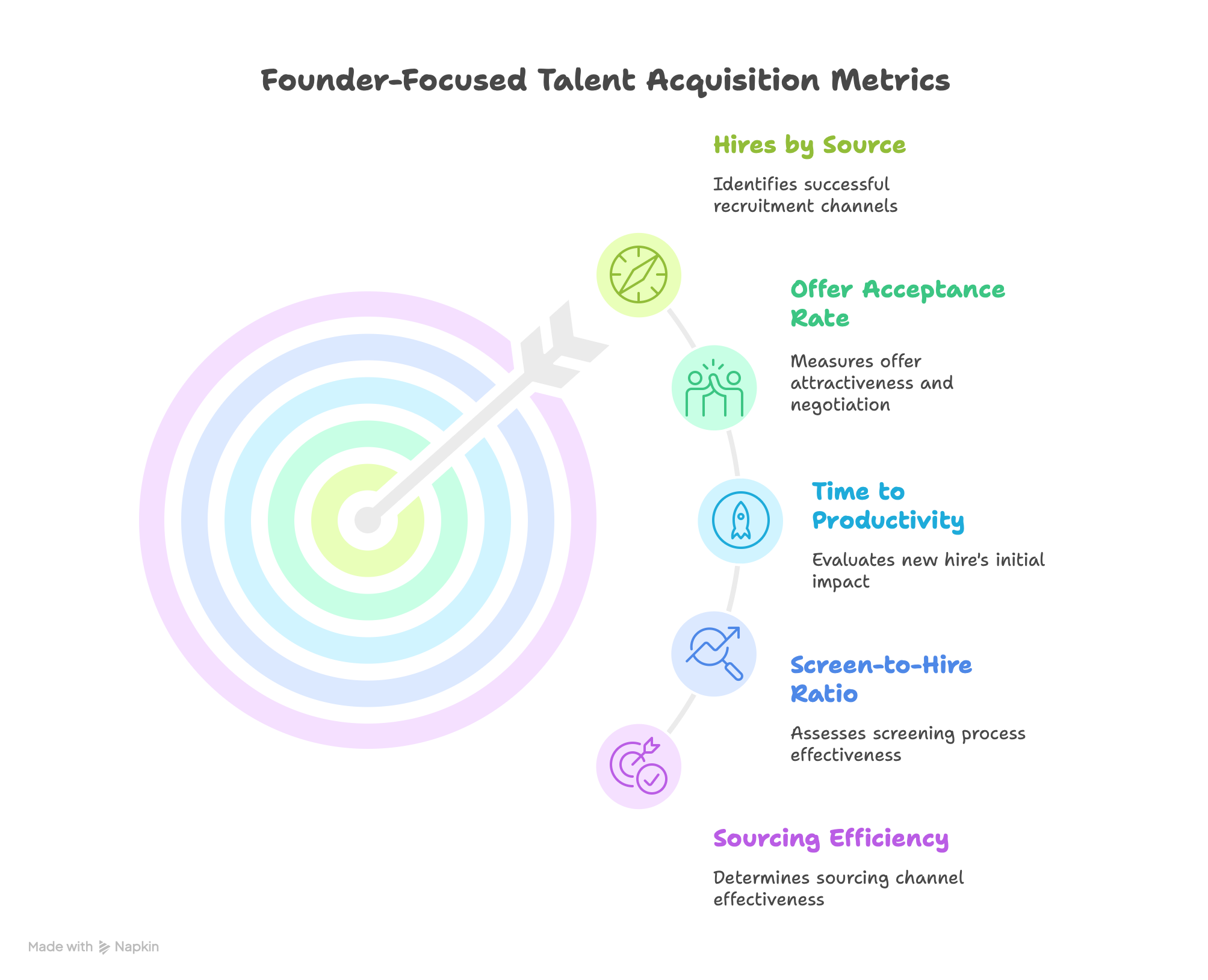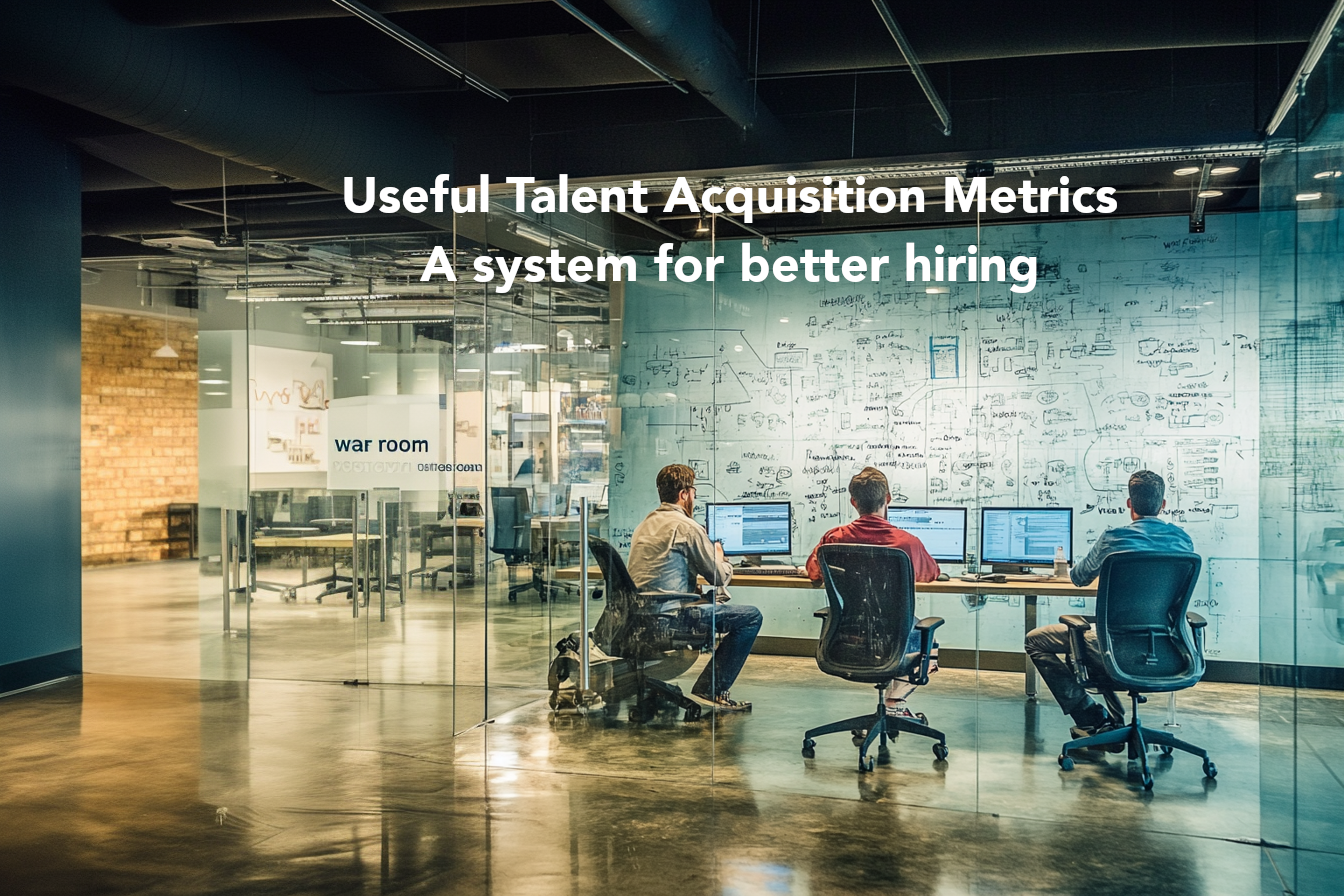📊 Talent Acquisition Metrics That Actually Matter in Startups
How to Measure What Moves the Needle — Not Just What Fills the Funnel
Intro: Why Founders Need Better Hiring Data

Let’s be honest — most early-stage hiring is done blind.
You post a role. Talk to a few people. Maybe hire one. Maybe regret it later.
What gets tracked? Usually just... number of applicants.
But when hiring is your #1 growth lever, tracking the right metrics is non-negotiable.
At UnitiQ, we work with fast-scaling startups to fix chaotic processes and build clear, actionable hiring dashboards — even with limited data. Here’s what matters most.
1. Ditch Vanity Metrics. Track Business Impact.
You don’t need 20 KPIs. You need 5–7 that tell you:
- Are we hiring the right people?
- Are we spending our time and resources wisely?
- Are we getting better over time?
Vanity metric: “We had 200 applicants.”
Impact metric: “3 of the 5 hires we made are already driving key results.”
2. The Core Metrics That Matter in Early-Stage TA
Here’s a founder-focused framework we recommend:

🔹 Time to Alignment
Definition: Days from job opening to clear decision on ideal candidate profile (ICP).
Why it matters: The biggest delays happen before sourcing. Clarity is your multiplier.
🔹 Sourcing Efficiency
Definition: % of sourced candidates who reach interview stage.
Why it matters: High-efficiency = strong targeting. Low = wrong channels or unclear messaging.
🔹 Screen-to-Hire Ratio
Definition: Number of first calls per successful hire.
Why it matters: A low ratio means tight filters. A high one signals wasted founder time.
🔹 Offer Acceptance Rate
Definition: % of offers accepted.
Why it matters: Strong storytelling + offer calibration = less churn at the finish line.
🔹 Time to Productivity
Definition: Days from start date to delivering value.
Why it matters: Hiring success isn’t about signing. It’s about contribution.
🔹 Hires by Source
Definition: Where did your best people come from?
Why it matters: Helps double down on what works — and cut spend elsewhere.
3. Optional (But Smart) Metrics to Layer In
For teams starting to mature, we also look at:
- Pipeline velocity by stage (e.g., sourced → first call)
- Candidate NPS (to reduce drop-off from top-tier candidates)
- Hiring manager satisfaction
- Referrals as % of hires
- Diversity indicators (if tracked responsibly)
4. Common Data Traps for Founders
- Tracking what’s easy, not what’s useful
- Just because your ATS shows it doesn’t mean it matters.
- Measuring in isolation
- Time-to-hire is irrelevant if the hire was wrong.
- Overloading the system
- Early teams don’t need dashboards. They need clarity.
Start simple. Ask: Is this metric helping us make better decisions?

5. Why This Matters to Investors (and Future Leaders)
Founders who know their hiring numbers stand out.
They make smarter decisions, onboard better, and retain longer.
Also: You’re building a system that future leaders can inherit. Clear metrics = scalable process = trust.
👉 Related Reads:
6. What UnitiQ Tracks When We Work With Clients
As an embedded talent partner, we set up tracking from day one.
Even if it’s just a shared spreadsheet, we measure:
MetricInsight
Time to alignment
Are we shaping the role well with founders?
Sourcing efficiency
Are we hitting the right market?
Scorecard calibration
Are interviewers consistent?
Offer conversion
Are we selling the story well?
Ramp-up feedback
Was the hire a true match?
Why? Because hiring is a business function, not an admin task.
Final Thought: Metrics Make You Credible
Whether you’re hiring 5 or 50, the right TA metrics help you:
- Save time
- Focus energy
- Build team confidence
- And show investors you’re not winging it
Start small. Track smart. And if you want a partner who brings the system with them — UnitiQ is built for this.
Check out our Hiring Services for Startups
